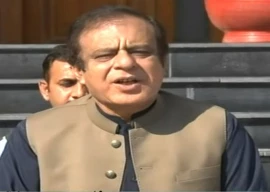
Many issues touch upon fundamental rights. Only some of these are of public importance. If I were asked to name an issue of public importance that touched upon fundamental rights, I would submit, without hesitation, that it is the disposal of domestic and industrial waste into the River Ravi. However, unlike other issues, this oner barely gets noticed. The River Ravi is a part of the Indus Basin and wed to the story of South Asia. Partition transformed it into a transboundary river. Under the Indus Water Treaty, the Ravi is one of three eastern rivers whose waters were allocated to India. In 2001, the Government of Indian Punjab completed the Ranjit Sagar Dam project — which produces 800MW of electricity and offers irrigation functions as well — reducing flows of the River Ravi into Pakistan from 264m3/s in 2000 to 206m3/s in 2001.
Beyond the India-Pakistan boundary, from the Ravi Siphon, the River Ravi travels approximately 100km before it reaches the Balloki headworks and then channelled into the various canals that irrigate Punjab south of Lahore. Within this 100 kilometres, the Ravi receives 3,400,000 cubic metres a day of wastewater amounting to approximately 862,000Kg/day of BOD (biochemical oxygen demand) pollution load discharge. This untreated wastewater is received by the Ravi through five outfalls (NE District, Shahhdara, Main, Gulshan Ravi and Multan Road) and two natural surface drains (the Hudiara and Deg). In other words, the entire city of Lahore, with its population of nine million people, basically uses this river like its nullah.
In his excellent PhD thesis on a water quality management model for the Ravi, Husain Haider of the University of Engineering and Technology, Lahore, has set out clearly the pollution being discharged into the river, as well as a roadmap to address the situation.
This untreated wastewater has and will continue to have a dramatic impact on water quality, the environment, health and irrigation, downstream from Lahore. The National Environmental Quality Standards (NEQs) established by the Pakistan Environment Protection Council prohibit effluent discharge onto any receiving bodies with biochemical oxygen demand and chemical oxygen demand of more than 80 and 150mg per litre respectively. In a study titled Water Quality Assessment of Effluent Receiving Streams in Pakistan: A Case Study of Pakistan published in the University Research Journal of Engineering & Technology (July 2011), the BOD and COD levels in the River Ravi increased from 410 to 495mg/L and 815 to 870mg/L. In addition, this study finds concentrations of phosphates, chlorides, sodium, nitrates, oil and grease in the river water. Other chemicals such as fluoride, copper and zinc are also discharged into the river. These render the water of the Ravi unfit for human recreation and make it almost impossible for fish to survive.
Those living in settlements downstream that rely on surface water for domestic purposes or on groundwater recharged by canal flows are susceptible to illness and disease as a result of contaminated water. It’s no surprise that every other Pakistani in a hospital today is there because of a waterborne disease or illness. The further you do downstream, as more and more settlements simply through their untreated waste in the rivers and canals, the water quality gets worse and worse.
The Pakistan Environment Protection Act, 1997 makes the Environment Protection Agency responsible for enforcing the NEQs. I wonder what action they are taking against violators? The Water and Sanitation Agency of the Lahore Development Authority and the City District Government of Lahore do not have a single waste treatment plant. The Government of Punjab has, for its entire term so far, been in negotiations for the installation of a waste treatment plant for the city. But it has done nothing.
The right to life includes the right to clean and healthy environment. This fundamental right is being violated by the pollution discharged into the Ravi. The violation of this right is affecting the lives and livelihoods of millions and is destroying the ecosystem.
Is this not a matter of public importance touching upon fundamental rights?
Published in The Express Tribune, January 12th, 2012.
COMMENTS (12)
Comments are moderated and generally will be posted if they are on-topic and not abusive.
For more information, please see our Comments FAQ





































1713509570-0/Taylor-Swift-Album-Release-(1)1713509570-0-270x192.webp)



















Wakey Wakey Sam we sold that river back in the 50's to India
@faraz:
Once again "ECOSYSTEM", clean water in rivers is directly related to food supply.
Boring subject find some masala topice for good responses
Rafay Alam, I hear abt you from the environment president of my school. I hope your cause succeeds. I would also like you to take up the issue of roadside dirt and sand. I notice that sand and construction material(pieces of bricks) often restricts the growth of plants and they physically exist everywhere. I hope you launch campaigns against these. I hope to see a cemented/planted pakistan. Open dirt is a eye sore, and solving this problem could ptentially also reduce slavery since when there would be no open dirt, there would be no dirt in air, and it wouldn't form layers over our furniture.
@RH, Umar
Our 57 percent population is food insecure, we can save the Ravi later
206m3/s still flowing in Pakistan -- obiously that's too much water India is losing. Once we start using up all the water, the problem of pollutant discharge will be solved automatically.
@faraz:
Have you heard of a scientific word called "Ecosystem" ?
@faraz: are you really that ignorant?
@Author:--I fully agree with the concern you have shown but you missed one more,more dangerous and harmful method used by people of posh areas.They dig a tube-well like hole in their basements some 200 feet deep and insert 6 inch pipe with filter at the lower end and connect it to the waste water drain pipe of the building,the underground water gets mixed up with this dirty water and gets sucked up by municipal tube-wells which then is supplied to homes as clean drinking water.This practice is very common where there is no proper sewerage system or is malfunctioning due to poor quality material and CORRUPTION.You are requested to pay some attention to this menace too
So if we are admitting ourselves that "the entire city of Lahore, with its population of nine million people, basically uses this river like its nullah." then why blame other countries for our problem? India seems to be using its share judiciously. No international observer have ever found any fault with india's water share for last 60 years inspite of our repeated appeals. Clearly, the problem lies with us and how we manage this resource within our borders.
There needs to be a stronger collective will to fight for issues for sanitation, clean water and environment.
We are suffering with shortages of food while you are worried about disposal of c_@p